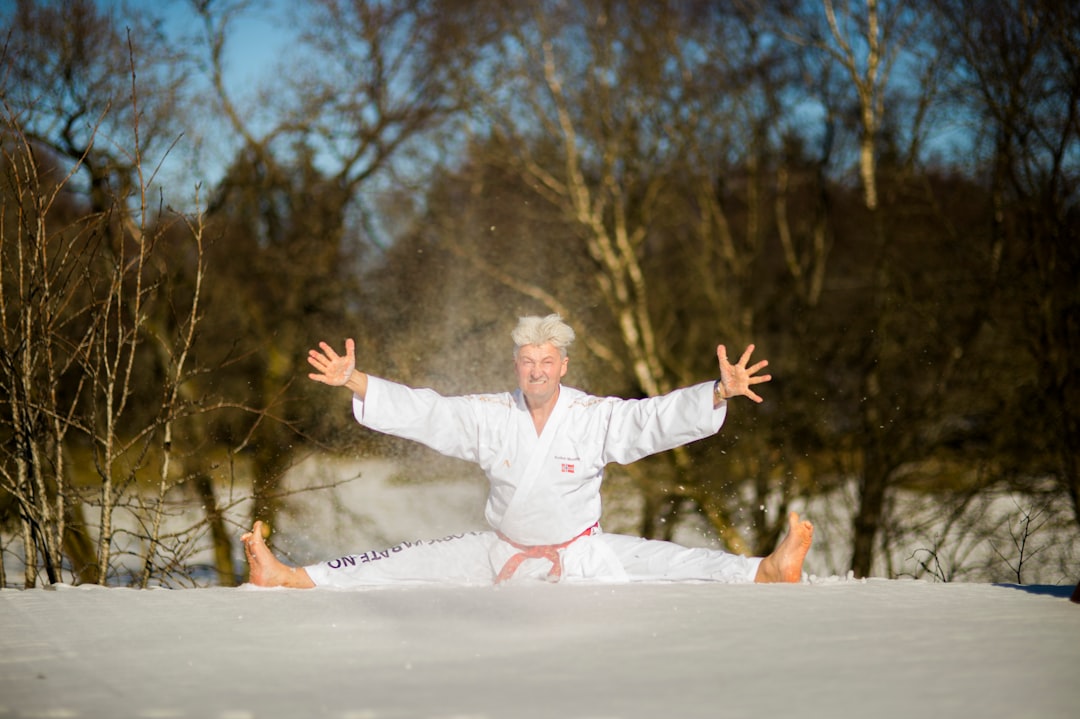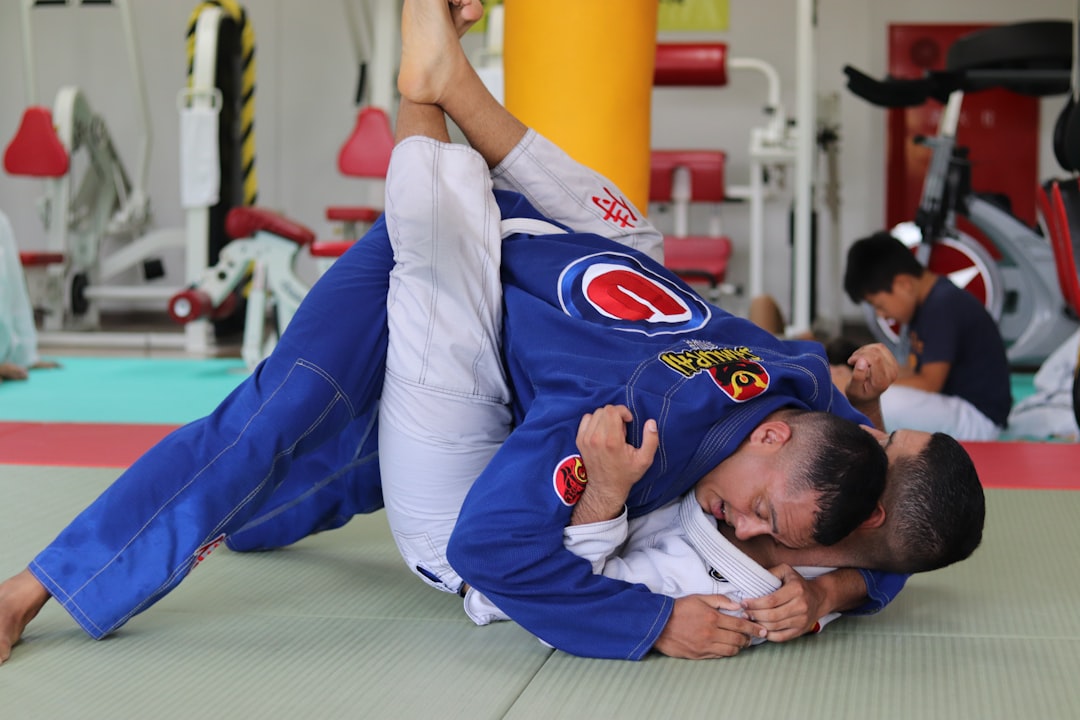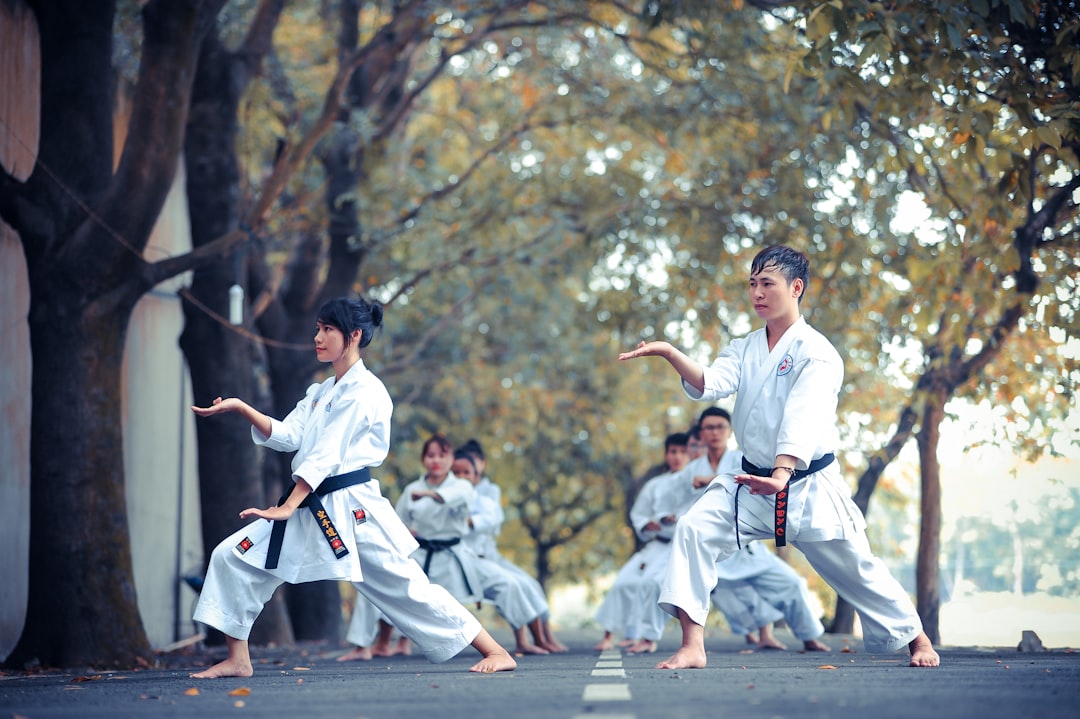When practicing karate, selecting an appropriate gi and safety gear is crucial for both performance and safety. For beginners, a well-fitted traditional karate gi that adheres to World Karate Federation standards is essential, ensuring comfort and respect for tradition. Advanced practitioners should also invest in protective gear like padded gloves, mawashi gedi and kamae, and a mouthguard for full-contact styles like kumite to prevent injuries. Additionally, depending on the style, extra padding for elbows, shins, and chest might be necessary. When it comes to the karate outfit name, one must choose between a heavy and durable Gi, often made of canvas or hemp, and a lighter, more flexible Keikogi, typically made from cotton or blended fibers. The decision should be influenced by personal preference, the style of karate being practiced, and the specific training context, as each has its own advantages in terms of comfort, breathability, and movement range.
embarking on a journey in karate requires an arsenal of gear tailored to enhance your training and practice. This comprehensive guide delves into the essential equipment every aspiring martial artist needs, from the quintessential karate uniform—be it a Gi or Keikogi—to the protective pads that ensure safety during practice. We’ll explore everything from training mitts and focus pads to the right dojo shoes or Kiai-Dzuki, as well as accessories like belts and target dummies for refined drills. Additionally, we’ll address the importance of a basic first aid kit and maintaining proper hydration and nutrition to support your rigorous training regimen. Beyond the basics, we’ll also cover advanced training tools, sparring gear, weapons for traditional forms, and recovery equipment that can take your karate skills to the next level. Whether you’re a beginner or an experienced practitioner, this article will provide valuable insights on mastering your martial art with the appropriate tools and techniques.
- Essential Karate Gear: Breaking Down the Necessities for Aspiring Martial Artists
- 1. Karate Uniforms: Understanding Gi and Keikogi
Essential Karate Gear: Breaking Down the Necessities for Aspiring Martial Artists

When stepping into the world of karate, outfitting yourself with the appropriate gear is crucial for both performance and safety. Aspiring martial artists must first consider the essential karate outfit, known as a gi. The gi typically consists of a jacket, trousers, and belt, each serving a specific purpose in terms of comfort and traditional adherence during practice and competition. Choosing the right size and material for your gi is essential; it should allow for ease of movement while not being overly baggy or restrictive. Does the gi need to conform to any particular standards? Yes, it does. The gi you select should adhere to the specifications set by the World Karate Federation (WKF) if you plan to compete at an international level.
In addition to the gi, protective gear is a necessary component of karate training, especially when learning and practicing more advanced techniques. Padded gloves and foot protectors, known as mawashi gedi and kamae, are designed to safeguard both the practitioner and their partner from injuries caused by strikes. Are these protective items mandatory for all karate practice sessions? While they are not always required during casual training, they become essential when sparring or executing high-impact techniques. Quality gear can prevent injuries and ensure that you can continue your training without interruption. It’s also beneficial to have a well-fitting mouthguard to protect your teeth and gums from accidental impacts. What other protective measures might be necessary depending on the style of karate being practiced? Depending on the style, additional padding for elbows, shins, and chest may be needed, especially in full-contact forms like kumite.
1. Karate Uniforms: Understanding Gi and Keikogi

When practicing karate, the choice between a karate uniform named Gi and Keikogi can be influenced by personal preference and the specific context in which one is training. Are you aware of the differences between these two karate outfit names? While both are traditional martial arts uniforms, they serve similar purposes but may vary slightly in design. A Gi typically features a heavier and more rigid fabric, often canvas or hemp, which is favored by many traditional practitioners due to its durability and respect for the martial art’s origins. On the other hand, a Keikogi, also known as a Karate-Gi, is usually made of lighter material such as cotton or blended fibers, offering a greater range of motion. This makes it suitable for both traditional practice and more dynamic, modern karate styles. Both garments are designed to facilitate movement, absorb perspiration, and allow instructors and students to train comfortably while adhering to the discipline’s traditions. When selecting your karate outfit name, consider the style of karate you are practicing and your personal comfort during training. Is the fabric breathable? Does the cut of the Gi or Keikogi accommodate your movements without hindrance? These aspects are crucial when choosing the right karate outfit name for your training regimen.
For those stepping onto the path of karate, equipping oneself with the appropriate gear is a cornerstone of the practice. Aspiring martial artists should prioritize acquiring a high-quality karate uniform, whether it be a traditional Gi or a Keikogi, both serving as a symbol of respect and readiness on the mat. These garments not only facilitate proper technique execution but also ensure comfort and durability throughout training. Additionally, essential protective gear, such as hand pads and foot protectors, should be considered for safe practice, particularly when engaging in sparring or techniques involving impact. By investing in the right equipment from the outset, practitioners can fully immerse themselves in the discipline of karate, setting a solid foundation for their martial arts journey.
